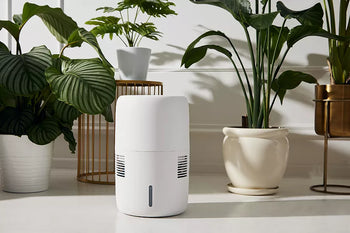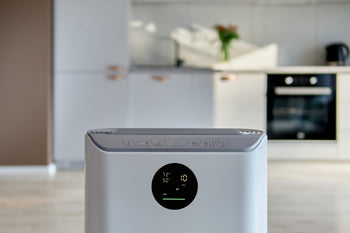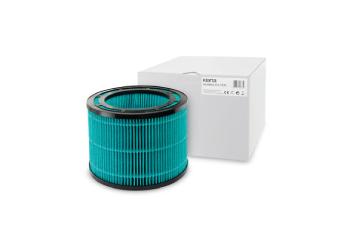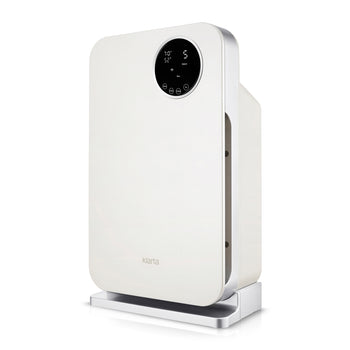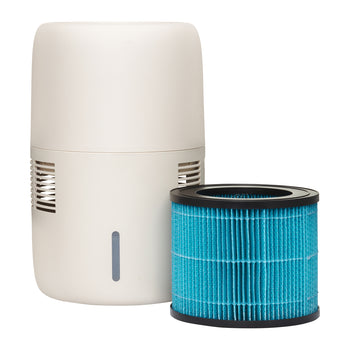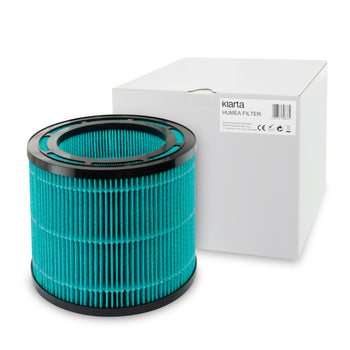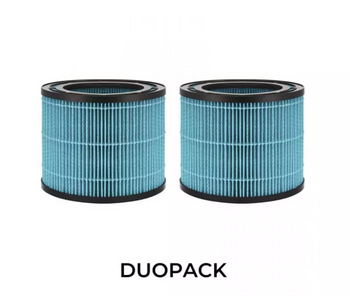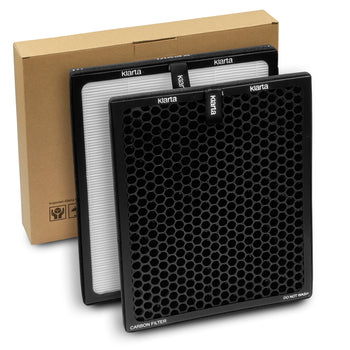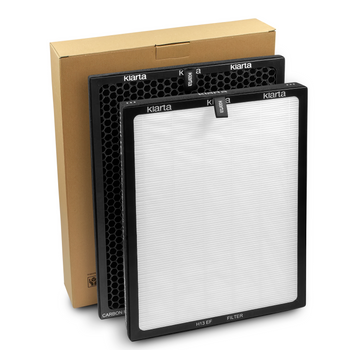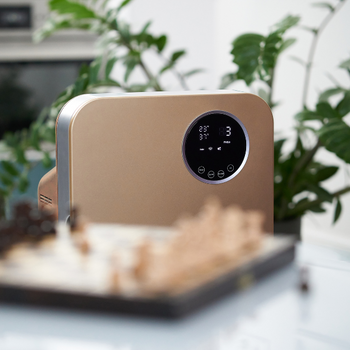
How to Improve Air Quality in Your Home - 10 Easy Tips from Klarta
The air quality in our homes has a significant impact on our health and well-being, so it’s worth taking care of it. There are several ways to improve the air quality, and in this article, we present ten that we believe deserve special attention.
1. Use an air purifier
A good air purifier can quickly improve air quality at home, protecting against:
- Smog – increases the risk of cancer, heart attack, stroke, Alzheimer's disease, and many other conditions,
- Inhaled allergens – plant pollen, mold, dust mites, and pet hair significantly reduce the quality of life for allergic individuals and can lead to the development of asthma,
- Cigarette smoke – contributes to cancer, respiratory and cardiovascular diseases, and causes respiratory and eye irritation,
- Volatile organic compounds, including formaldehyde – many of these are confirmed carcinogens and are found in cleaning products, cosmetics, interior finishes, and furniture,
- Bacteria and viruses – while a purifier cannot completely prevent infection, as it can occur through direct contact with an infected person or object, it reduces the risk by capturing airborne pathogens,
- Unpleasant odors.
The Klarta Forste and Klarta Stor, with their combination of H13, carbon, and pre-filters, remove nearly 100% of pollutants. Precise sensors and three excellent automatic modes allow them to independently adjust the filtration rate to current needs.

2. Use a Humidifier
Dry air is a common problem, especially during the heating season. When the humidity is below 40%, it leads to:
- Drying of the respiratory tract mucous membranes, resulting in a scratchy throat and dry cough,
- Increased susceptibility to viral and bacterial infections, related to the drying of the respiratory mucous membranes. The cilia in the mucous membranes cannot effectively filter the air.
- Drying of the eye mucous membranes, leading to redness, burning, and tearing.
- Dry skin, causing redness, itching, and premature aging.
- Deterioration of hair condition, manifesting as loss of shine and brittleness.
The best way to increase humidity is to use a good air humidifier. The Klarta Humea, with a capacity of 300 ml/h, handles even severe dryness and, thanks to its built-in hygrostat and app control, ensures easy operation and maintains humidity at the ideal level.

3. Prevent excessive humidity
While dry air is undesirable, excessive humidity, above 60%, is also problematic. For comfort and health, each Klarta air humidifier is equipped with a hygrometer to maintain the ideal humidity level in your home.
As soon as the humidity level exceeds safe values, the Klarta humidifier promptly responds, informing you via a dedicated mobile app. Moreover, with the ability to set custom rules in the Smart Life – Smart Living app, you can personalize the humidifier's operation, ensuring a healthy and comfortable environment for you and your loved ones every day.
To combat excessive humidity, a dehumidifier is useful, but addressing the root cause of the problem is crucial, which can include:
- Blocked rainwater drainage pipes,
- Leaky roofs,
- Poor foundation moisture ventilation,
- Water supply and sewage system failures,
- Faulty ventilation,
- Drying laundry indoors.
Preventing high humidity is important because it can cause:
- Headaches, muscle, and joint pain,
- Exacerbation of rheumatic disease symptoms,
- Growth of pathogenic molds and fungi in the room.
4. Limit dust-collecting items
Decorative pillows, throws, curtains, rugs, etc., add a cozy look to interiors but also collect dust and pollen. When disturbed, these contaminants become airborne. It is worth limiting such decorations and maintaining their cleanliness, especially for allergy sufferers.

5. Replace filters in purifiers and humidifiers as needed
The carbon and H13 filters in purifiers and the evaporative filter in humidifiers wear out and lose effectiveness. It is important to monitor their condition and replace them when necessary.
Klarta Forste and Klarta Stor purifiers and Klarta Humea humidifier have filter replacement indicators. However, filters may sometimes wear out sooner or later. For air purifying filters (H13 and carbon), air quality affects their lifespan, while the humidifier filter’s lifespan depends on usage and hygiene practices.
6. Ventilate rooms when outdoor pollution is lowest
Rooms should be regularly ventilated, even in winter. However, avoid opening windows when outdoor pollution is highest. In winter, smog levels usually increase in the evenings, so it's better to ventilate earlier. Ideally, use the purifier during this time to capture incoming pollutants.
Numerous websites and apps provide information on current air quality. Using them will help you choose the right time to ventilate, reducing the risk of smog exposure.
7. Do not smoke indoors
Nicotine, hydrogen cyanide, nitrogen oxide, cadmium, benzene – these are just a few harmful components of cigarette smoke. Passive smoking is just as harmful as active smoking, and there's also "third-hand smoke," where smoke components settle on furniture, walls, and curtains, remaining for a long time. Avoiding smoking indoors protects everyone's health in the home.
8. Maintain proper ventilation
Ventilation removes polluted air and ensures the supply of fresh air. To function properly, ventilation ducts must be clean and operational. Neglect leads to air pollution and humidity problems.
Poor ventilation combined with a gas heater can result in excessive carbon monoxide, posing a risk of poisoning. Maintaining ventilation is crucial for good indoor air quality.

9. Use essential oils instead of air fresheners
Many people rely on air fresheners for a pleasant scent, but they often contain harmful chemicals, including volatile organic compounds. Natural essential oils are a better alternative. They come in various scents with different benefits. For instance, peppermint and eucalyptus oils repel mosquitoes, lavender helps with sleep, and tea tree oil aids with sinus congestion.
10. Grow plants
Houseplants enhance the appearance of your home and improve air quality. Some plants remove harmful gases like formaldehyde and xylenes. While their effectiveness is lower than air purifiers, and they don't absorb suspended dust, plants still offer benefits.
Additionally, some plants increase humidity, though humidifiers are more effective in this regard. Plants’ properties deserve attention.

Summary – How to improve air quality at home?
In summary, houseplants are a valuable addition to our efforts to achieve cleaner air at home. They offer natural help in regulating humidity and bringing a touch of nature to our environment. However, for the best results in terms of air purity and humidity, the solutions provided by Klarta air purifiers and humidifiers are indispensable.
With advanced technology and precision, Klarta humidifiers effectively regulate air humidity, providing optimal comfort and health for you and your loved ones. Investing in a Klarta device means investing in a better quality of life and a long-term solution for healthy, clean air at home.
Source:
wikipedia.pl
klarta.pl
